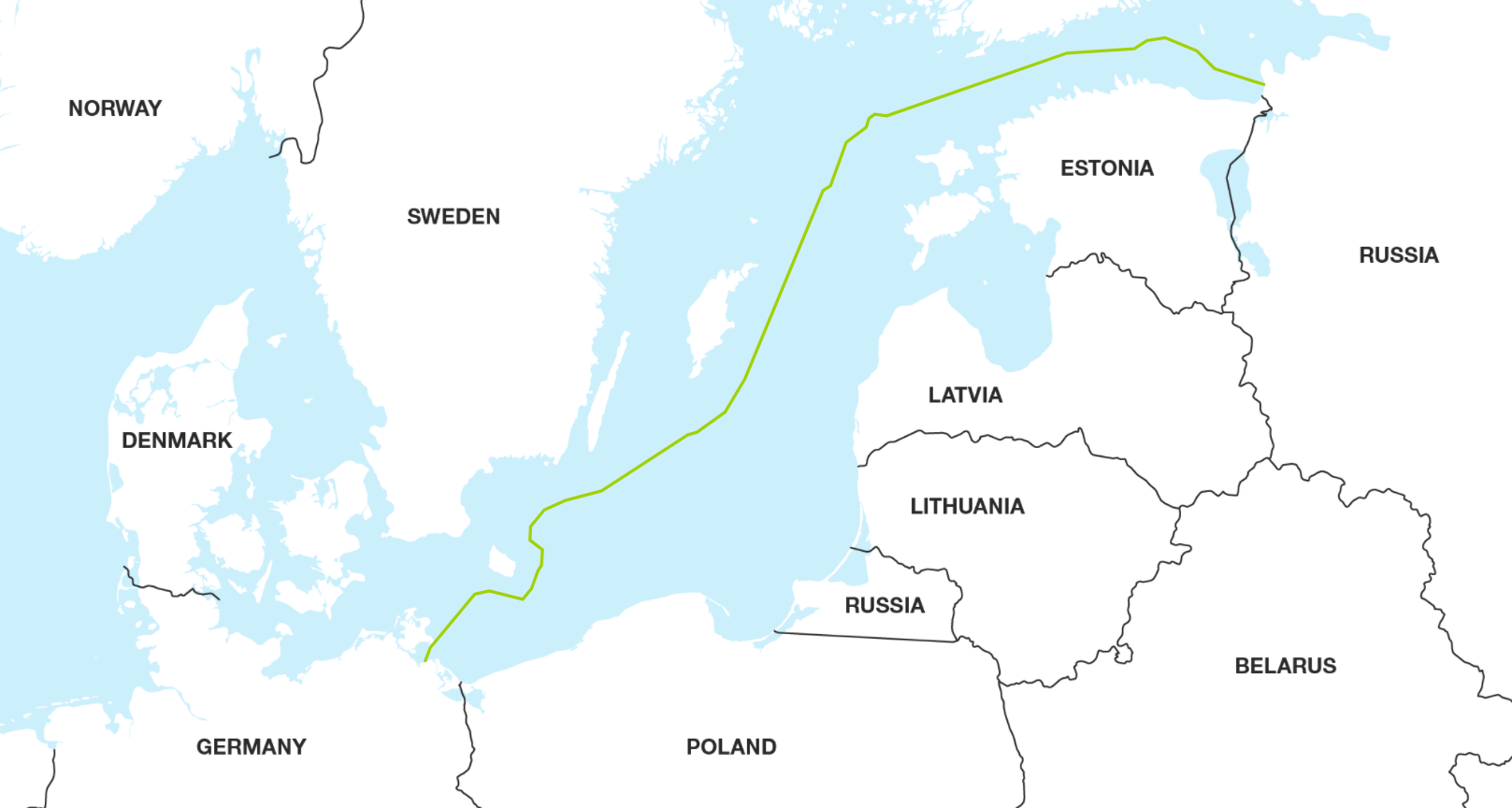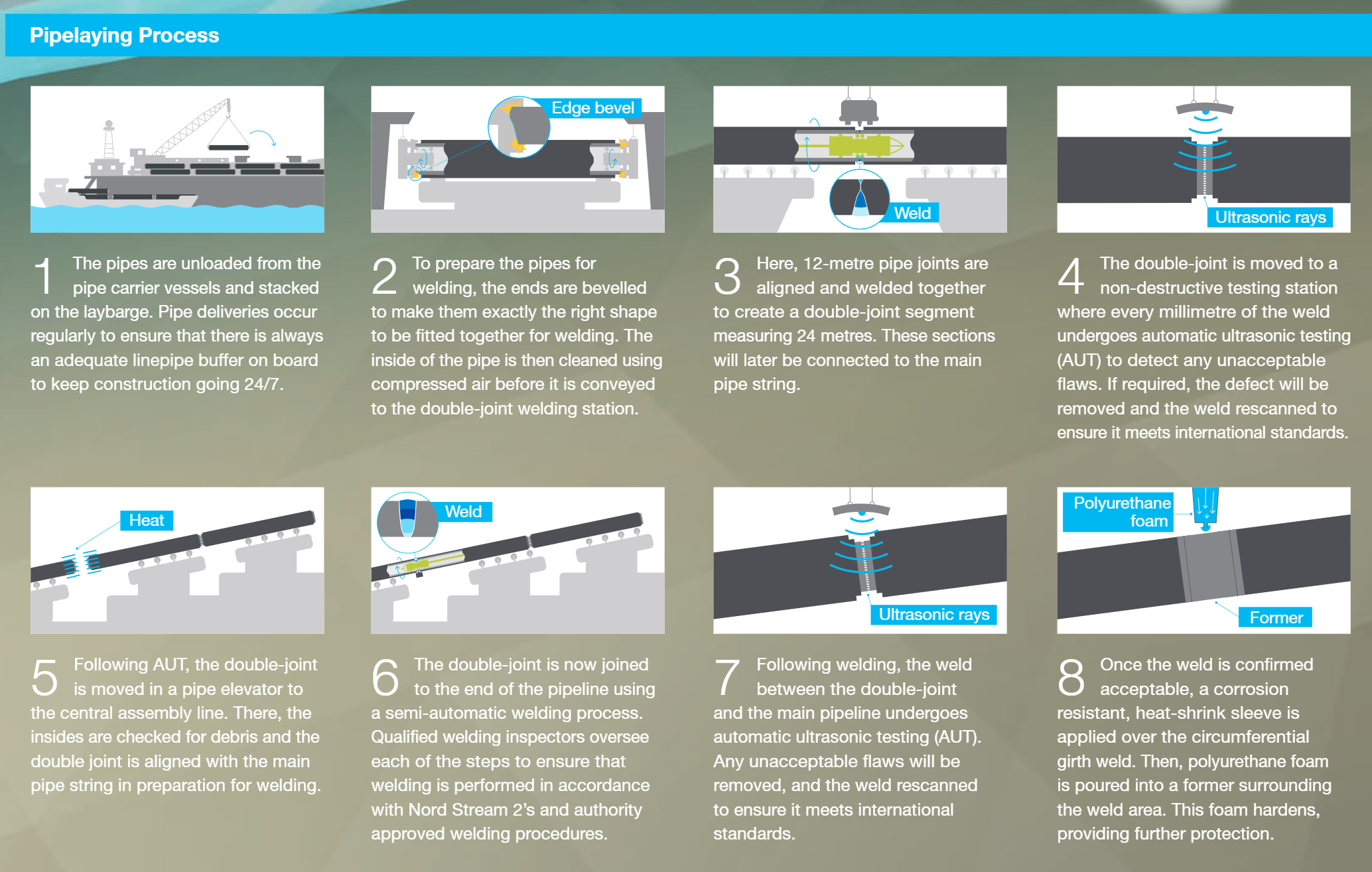“The twin pipeline stretches approximately 1,234 kilometres through the Baltic Sea from Russia to Germany, a route that largely runs parallel to the existing Nord Stream system. On both ends, landfall facilities have been constructed to suit local conditions, with the pipeline laid along the seabed in between.
Nord Stream 2 passes through the waters of five Baltic Sea nations: Russia, Finland, Sweden, Denmark and Germany. Because each country has its own unique set of conditions, thorough preparation was key. Extensive seabed surveys defined the optimum route, while detailed engineering and logistics plans enabled an around-the-clock construction schedule.
Pipeline construction began in 2018. By the end of 2019, it was complete in Russian, Finnish and Swedish waters, with much of the work finished in German and Danish waters as well. Because Denmark was the last country to grant a permit for construction in its waters, most of the remaining work had to be done in that area.

However, pipelay was suspended in December 2019 due to the threat of US sanctions that targeted the project’s contractors and financial investors. The European Commission described these sanctions as a breach of international law, and we created solutions to ensure that pipelay eventually continued. In early September 2021, the last pipes were welded into the pipeline string and lowered onto the Baltic seabed in German waters.
Next, the required pre-commissioning activities will be carried out with the goal of putting the pipeline into operation before the end of 2021.
Each step of the way Nord Stream 2 has worked with the world’s leading suppliers, applying rigorous environmental, health, safety, and social standards to protect the sensitive Baltic Sea environment and the communities affected by the project. All works have been carried out in compliance with national permit conditions and monitored for potential environmental impacts.”
Source: https://www.nord-stream2.com/construction/overview/
Fact Sheet: The Nord Stream 2 Project
1. Project Details
> Offshore natural gas pipeline through the Baltic Sea from St Petersburg Region
(Russia) to Lubmin on the Baltic Coast in Northeast Germany
> Length: approx. 1,230 kilometres; two parallel lines on the seabed
> Total capacity: 55 bcm of natural gas per year (27.5 bcm per line)
2. Budget and Financing
> Shareholder: PJSC Gazprom
> Financial investors: ENGIE S.A., OMV AG, Royal Dutch Shell plc, Uniper SE and
Wintershall Holding GmbH. Each company will fund up to 950 million euros
> CAPEX: around 8 billion euros, fully privately funded investment
> Overall costs including financing costs: around 9.5 billion euros
3. Timeline
> Since 2011: Feasibility study and preparatory stages by Nord Stream AG
> 2013: Publication of Project Information Document (PID)
> 2017: Completion of all Environmental Impact Assessments
> 2018: First permits granted in Germany and Finland
> Next steps: remaining permits in Denmark, Russia and Sweden expected in time for
start of construction in 2018, planned commissioning of both lines end 2019
4. Project Significance
> Pipeline capacity of 55 bcm helps compensate growing import gap in the EU:
– EU domestic gas production is set to fall 50% in the next 20 years (Norway -25 bcm,
UK -25 bcm, Netherlands -40 bcm)
– Exports from Northern Africa will be limited and new gas from the Caspian region will
only play a marginal role for the EU
– Gas demand will remain largely stable over the coming 20 years
– This leaves 120 bcm of European supply to be compensated – by either LNG or
Russian gas in a competitive market
> Nord Stream 2 will be a direct connection between the world’s largest gas reserves in
Russia (47 trillion cubic metres) and the EU
> Nord Stream 2 can deliver enough energy to supply >26 million households per year
> Nord Stream 2 can deliver the equivalent of 600-700 LNG tanker loads
> 55 bcm of gas could save about 14% of total EU CO2 emissions from power
generation (approx. equal to the emissions of 30 million cars) if the gas were to be
used instead of coal
November 2021, Pipeline Construction. Source, Link
December 2020, Offshore Pipeline Construction. Source, Link
March, 2017 – NORD STREAM 2 NON-TECHNICAL SUMMARY, EIA DENMARK, Ramboll. Source, Link
June 2017, Nord Stream 2 Project Information, Source, Link
April 2017, Espoo Report , W-PE-EIA-POF-REP-805-040100EN, Source, Link
Apri 2017, Espoo Atlas, Source, Link
Espoo Report – Non-Technical Summary. Source, Link
Nord Stream 2: The $11BN Megaproject That’s Dividing Europe (1,177,502 views – 2022)
Nord Stream Logistics Construction Pipelaying Environment (6,939 views, 3/May/2011)
Nord Stream Underwater Tie Ins (36,773 views, 29 June 2011)
Nord Stream Hyperbaric Tie-ins ( 66,259 views – 22 May 2012)
Pipelaying Process. Link, Source. . S
. S
Discover more from Construction Methodology
Subscribe to get the latest posts sent to your email.
